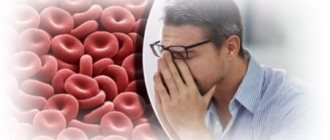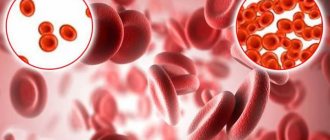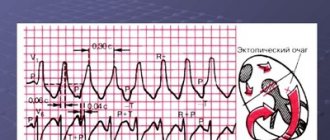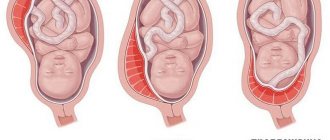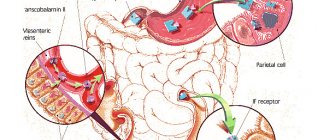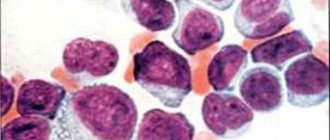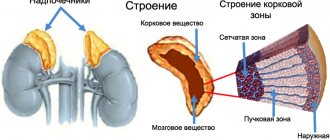While carrying a child, the female body needs a large amount of useful substances that participate in the processes that occur during pregnancy and ensure the growth and development of the fetus. One of the most important microelements is iron. Unfortunately, 40% of pregnant women develop iron deficiency - this condition is called iron deficiency anemia. It is caused by a decrease in the level of hemoglobin, a complex iron-containing protein that binds oxygen and delivers it to tissues and organs. As a result of anemia, cells do not receive enough oxygen, which is dangerous for the health of both the woman and the child.
Why does iron deficiency occur during pregnancy, what are its signs and consequences?
Risk group for anemia in pregnant women:
- Pregnancy in adolescence.
- Pregnancy and lactation during the previous 3 years, many births (more than 3 with a short interval).
- Excessive menstrual blood loss (monthly blood loss more than 100 ml).
- Gynecological diseases, especially uterine fibroids and endometrial diseases, inflammatory diseases of the pelvic organs.
- Diets low in animal protein (vegetarianism).
- Regular blood donation.
- Diseases of the gastrointestinal tract.
- Low socio-economic status.
- Obesity.
At the same time, WHO recommends that all menstruating women be considered at risk, provided that the prevalence of anemia in non-pregnant women in the region exceeds 20%.
Prevention of anemia during pregnancy:
Women at risk with normal clinical blood test values are advised to take the following preventive measures before pregnancy.
- Ensuring an adequate interval between births (2-4 years).
- Regulation of the menstrual cycle and reduction of blood loss during menstruation through the use of hormonal contraceptives.
- Treatment of acute and compensation of chronic diseases of the gastrointestinal tract.
- A balanced diet with the obligatory inclusion of animal protein.
- Preventive administration of iron supplements.
- Observation by a hematologist.
The danger of anemia during pregnancy:
The danger of anemia during pregnancy is that it leads to complications during pregnancy, childbirth and after childbirth. This is a violation of fetal development, toxicosis, premature birth, premature placental abruption, untimely rupture of water, weakness of labor, bleeding, inflammatory complications, decreased quantity and quality of milk. With anemia during pregnancy, premature birth and placental insufficiency are 3-4 times more likely, labor weakness and preeclampsia are 2-3 times more likely, and infectious and inflammatory complications and bleeding after childbirth are 2 times more likely. Iron deficiency affects both the intrauterine development of the fetus, especially the brain, and the further development of the child, who is born with iron deficiency and anemia. These children have reduced physical strength, endurance, and mental capabilities; the function of the immune and nervous systems is impaired.
Causes of iron deficiency in the female body during pregnancy
During the period of bearing a child, the volume of blood in the female body increases by 50%. At the same time, the amount of fluid increases, causing the blood to “thin out.” Therefore, a decrease in hemoglobin levels is natural: the lower limit of hemoglobin in the blood of pregnant women is set at 110 g/l. For comparison: the norm for non-pregnant women is from 120 to 140 g/l. It is worth considering that women often enter pregnancy with a deficient or borderline level of iron in the blood. Iron levels may be low due to heavy menstruation lasting more than 5 days, poor nutrition, problems with the gastrointestinal tract, in which this trace element cannot be fully absorbed in the body.
Iron deficiency anemia during pregnancy is indicated when the hemoglobin level drops below 110 g/l. There are three degrees of anemia:
- Mild severity (hemoglobin level - from 90 to 110 g/l).
- Moderately expressed (from 70 to 89 g/l).
- Heavy (from 40 to 69 g/l).
Treatment of anemia:
Treatment of anemia consists of proper nutrition and taking iron supplements with vitamins for a long time. Your doctor will prescribe medications for you, but you need to know how to eat properly during pregnancy.
The female body needs 1.5-1.7 mg of iron per day, during pregnancy - up to 6-7 mg. Throughout pregnancy you need 2000 mg of iron. With normal nutrition during pregnancy, a woman receives 700-800 mg and another 400-500 mg is consumed from the depot.
What if the iron supply in the depot is reduced (ferritin below 30 mcg/l)? 12 - 15% of women in the reproductive period of the Russian Federation suffer from iron deficiency anemia, and 60% from hidden iron deficiency. Therefore, it is so necessary to create an iron reserve before pregnancy. How often do women say at a doctor’s appointment: “But my hemoglobin is always low and I live.” But this is dangerous for pregnancy, as it poses a risk not only for the mother, but also for her child. It is right for such women to be examined and treated before pregnancy.
What is anemia?
Anemia in medicine is a decrease in the level of hemoglobin in the blood. Hemoglobin is needed to transport oxygen throughout the body, so when it decreases, the body begins to suffer, the following is observed:
- increased fatigue and weakness;
- insomnia;
- rapid heartbeat and shortness of breath;
- hair loss and brittle nails;
- inflammation and bleeding of gums, etc.
In the early stages, a person may ignore the problem, or explain everything by fatigue or stress. But the matter could be much more serious!
Anemia can be primary (congenital) or acquired. The root cause may be blood loss (including long-term hidden blood loss in small portions, for example, with a peptic ulcer of the stomach or intestines), impaired absorption of iron, and impaired hematopoiesis.
Nutrition for anemia:
It is important to remember that iron, which is absorbed by the human body, is found in the following foods: liver (the champion in iron content), meat, fish, eggs. Apples, pomegranates and other fruits and vegetables contain small amounts of iron that are not absorbed. But vegetables and fruits are necessary, as they contain vitamins, microelements and fiber necessary for the absorption of foods containing iron.
The daily intake of meat, liver, or fish is at least 200 grams, as well as 1 egg. Only 2.5 mg of iron per day is absorbed from food (6-7 mg is needed during pregnancy), 15-20 times more from iron supplement tablets, so all pregnant women need a preventive dose of iron of 60 mg per day, which is contained in all vitamin and mineral supplements. complexes for pregnant women. Pregnant women with hidden iron deficiency or clinical anemia need a therapeutic dose of 100-200 mg. You need to know that tea, coffee, legumes, grains, rice, and dairy products significantly reduce the absorption of iron from foods and medications. Products containing vitamin C accelerate the absorption of iron entering the gastrointestinal tract.
Proper nutrition, timely prevention and treatment guarantee a reduction in complications for mother and child.
Anemia and pregnancy
Ultrasound scanner WS80
An ideal tool for prenatal research.
Unique image quality and a full range of diagnostic programs for an expert assessment of a woman’s health.
Anemia is characterized by a decrease in the level of hemoglobin in the blood, a decrease in the number of erythrocytes (red blood cells), the appearance of their pathological forms, as well as changes in the vitamin balance, a decrease in the amount of microelements and enzymes in the body. Anemia is one of the most common complications of pregnancy. The leading sign of anemia in pregnant women is a decrease in hemoglobin level to less than 110 g/l. Anemia in pregnant women in 90% of cases is iron deficiency. This anemia is characterized by a violation of hemoglobin synthesis due to iron deficiency developing as a result of various physiological and pathological processes. According to WHO, the incidence of iron deficiency anemia in pregnant women ranges from 21 to 80%. The presence of iron deficiency anemia leads to a disruption in the quality of life of patients, reduces their performance, and causes functional disorders in many organs and systems. Iron deficiency in pregnant women increases the risk of complications during childbirth, and in the absence of timely and adequate treatment, iron deficiency may also occur in the fetus.
The human body contains about 4 g of iron, which is one of the elements vital for the body. It is part of hemoglobin and a number of other vital substances that affect the function of various organs and systems in the human body. 75% of the iron in the human body is found in hemoglobin. Iron is most fully absorbed from animal products (meat), and much worse from plant foods. The release of iron from foods is reduced when they are cooked, frozen, or stored for a long time.
Iron is excreted from a woman’s body in the amount of 2-3 mg per day through the intestines, bile, urine, through the exfoliating epithelium of the skin, during lactation and menstruation.
In non-pregnant women, the iron requirement is 1.5 mg per day. During pregnancy, the need for iron steadily increases in the first trimester by 1 mg per day, in the second trimester - by 2 mg per day, in the third trimester - by 3-5 mg per day. To produce additional iron, 300 - 540 mg of this element is used. Of these, 250 - 300 mg of iron is spent on the needs of the fetus, 50 - 100 mg on the construction of the placenta, 50 mg of iron is deposited in the myometrium. Iron loss is most pronounced in 16-20 weeks of pregnancy, which coincides with the period when the process of hematopoiesis begins in the fetus and the increase in blood mass in the pregnant woman. In the third stage of labor (with physiological blood loss), 200 to 700 mg of iron is lost. Later, during lactation, another 200 mg. Thus, about 800 - 950 mg of iron is consumed from the maternal depot during pregnancy and the postpartum period. The body is able to restore iron reserves within 4-5 years. If a woman plans a pregnancy before this period, she will inevitably develop anemia. Iron deficiency cannot but occur in multiparous women.
Of interest are some indicators (presented in the table) of peripheral blood depending on the duration of pregnancy.
Table.
Some peripheral blood parameters in different trimesters of pregnancy.
| Indicators | 1st trimester | 2nd trimester | 3rd trimester |
| Hemoglobin, g/l | 131 (112-165) | 126 (110-144) | 112 (110-140) |
| Hematocrit, % | 33 | 36 | 34 |
| Red blood cells, 1012/l | 10,2 | 10,5 | 10,4 |
| ESR mm/hour | 24 | 45 | 52 |
Prevention of anemia, first of all, should be carried out among pregnant women who are at high risk of developing it.
Factors contributing to the development of iron deficiency anemia
- Reduced iron intake from food (vegetarian diet, anorexia).
- Chronic diseases of internal organs (rheumatism, heart defects, pyelonephritis, hepatitis). In liver diseases, the processes of iron accumulation in the body and its transportation are disrupted. Particular attention should be paid to diseases of the gastrointestinal tract. Gastrointestinal bleeding due to gastric and duodenal ulcers, hemorrhoids, as well as intestinal diverticulosis, ulcerative colitis, and helminthic infestation lead to anemia in patients.
- The presence of diseases manifested by chronic nosebleeds (thrombocytopathies, thrombocytopenic purpura).
- Gynecological diseases accompanied by heavy menstruation or uterine bleeding, endometriosis, uterine fibroids.
- Complicated obstetric history: multiparous women; history of spontaneous miscarriages; bleeding in previous births contribute to the depletion of iron stores in the body.
- Complicated course of this pregnancy: multiple pregnancy; early toxicosis; young age of the pregnant woman (under 17 years); primigravidas over 30 years of age; arterial hypotension; exacerbation of chronic infectious diseases during pregnancy; gestosis; placenta previa; premature placental abruption.
Pregnancy is contraindicated in the following forms of diseases of the blood and hematopoietic system: chronic iron deficiency anemia of III-IY degree; hemolytic anemia; bone marrow hypo- and aplasia; leukemia; Werlhof's disease with frequent exacerbations. If pregnancy occurs due to these diseases, it is advisable to terminate the pregnancy before 12 weeks.
The development of anemia during pregnancy is facilitated by: metabolic changes occurring in the patient’s body during pregnancy; decrease in the concentration of a number of vitamins and microelements - cobalt, manganese, zinc, nickel; changes in hormonal balance during pregnancy, in particular, an increase in the amount of estradiol, which causes inhibition of erythropoiesis; deficiency in the body of a pregnant woman of vitamin B12, folic acid and protein; lack of oxygen, which disrupts redox processes in a woman’s body; immunological changes in the body of a pregnant woman, occurring due to constant antigenic stimulation of the maternal body from the tissues of the developing fetus; consumption of iron from the depot of the mother’s body, necessary for the proper development of the fetus.
During pregnancy, so-called physiological or “false” anemia may also occur. The occurrence of this form is due to an uneven increase in individual blood components. The fact is that during pregnancy, as a compensatory reaction, there is an increase of 30 - 50% in the volume of the mother's blood, but mainly due to plasma (the liquid part of the blood). Accordingly, the ratio of the volume of blood cells (including red blood cells containing hemoglobin) and the liquid part of the blood (plasma) shifts towards the latter. This form of anemia does not require treatment.
Pathological forms of anemia during pregnancy
- Essential (cryptogenic) malignant anemia of Birmer-Ehrlich (synonyms: megaloblastic anemia, pernicious anemia, Addison-Birmer anemia). This anemia is rare during pregnancy. This form of anemia is associated with a deficiency of vitamin B12 or folic acid. The development of anemia associated with vitamin B12 deficiency is facilitated by past infections, insufficient intake of this vitamin from food, diseases of the stomach and duodenum, the use of medications (acyclovir, anticonvulsants, nitrofurans, oral contraceptives) and Crohn's disease.
- Hypochromic anemia, which is a concomitant disease during pregnancy. Anemia can be a consequence or concomitant pathology of infectious diseases (sepsis) and parasitic infestations (helminthiasis, malaria) during pregnancy. Hypochromic anemia during pregnancy can occur as a result of liver disease, stomach disease, and nutritional dystrophies.
- Megaloblastic anemia associated with folic acid deficiency accounts for 1% of all anemias in pregnant women and most often develops in the third trimester of pregnancy, before childbirth and in the early postpartum period. Folic acid plays an important role in many physiological processes, participates in the synthesis of a number of amino acids, and plays a key role in cell division processes. Tissues with a high rate of cell division (bone marrow, intestinal mucosa) are characterized by an increased need for folic acid. Folic acid deficiency in the body occurs due to: insufficient content in the diet; increased need for folic acid (pregnancy, prematurity, hemolysis, cancer); impaired absorption and increased excretion from the body (some skin diseases, liver diseases). The daily requirement of a pregnant woman's body for folic acid increases to 400 mcg, and by the time of delivery - up to 800 mcg; the need for folic acid during lactation is 300 mcg. Hidden folic acid deficiency is observed in up to 1/3 of the total number of pregnant women. Folic acid deficiency adversely affects the course of pregnancy and fetal development. The full formation of the fetal nervous system is impossible if there is a deficiency of folic acid in the woman’s body. With such a deficiency, the formation of neural tube defects (anencephaly, encephalocele, spina bifida) is possible. Another important fact confirming the role of folic acid during pregnancy is the close relationship between the level of folic acid in the mother's body and the birth weight of the child. Several weeks before birth, the fetus uses the mother's folic acid to increase its own weight and replenish its folate reserves. As a result, in women with folic acid deficiency, the likelihood of having a child with malnutrition and a reduced supply of folic acid increases significantly. The main sources of folic acid in food are: raw green vegetables and fruits (especially oranges), beef liver.
- Hypo- or aplastic anemia, in which there is a sharp suppression of bone marrow hematopoiesis. The causes of this form of anemia are most often: ionizing radiation; taking medications (chloramphenicol, aminazine, butadione, cytostatics); entry into the body of chemicals (benzene, arsenic) that have a myelotoxic effect; chronic infectious diseases (viral hepatitis, pyelonephritis); autoimmune processes. The diagnosis is made based on the results of a bone marrow puncture, which reveals the complete disappearance of bone marrow elements and their replacement with adipose tissue and hemorrhages. The mortality rate for a pregnant woman with this form of anemia reaches 45%. Therefore, it is advisable to terminate pregnancy up to 12 weeks followed by splenectomy. If hypoplastic anemia is diagnosed in late pregnancy, surgical delivery by cesarean section combined with splenectomy is recommended.
- Hemolytic anemia is a large group of diseases, the main distinguishing feature of which is a shortening of the life of red blood cells due to their hemolysis. There are two main groups: hereditary and acquired.
- Microspherocytic hemolytic anemia is hereditary. It develops due to a defect in the structure of the erythrocyte membrane, which leads to the penetration of excess sodium into the cell and the accumulation of water. The red blood cells become spherical and are destroyed in the spleen.
- Autoimmune hemolytic anemia, in which the formation of antibodies to one’s own red blood cells occurs. There are symptomatic and idiopathic autoimmune hemolytic anemia. The symptomatic form includes anemia, which develops against the background of hemoblastoses, systemic lupus erythematosus, ulcerative colitis, chronic hepatitis, and malignant ones. The idiopathic form includes those cases of anemia when it is impossible to establish the underlying disease. Rarely occurs during pregnancy. The prognosis for the mother is favorable. Delivery is through the natural birth canal.
Symptoms of anemic syndrome
Anemic syndrome is manifested by a complex of nonspecific symptoms and is caused by insufficient oxygen supply to tissues. The main clinical manifestations of this pathology are general weakness, increased fatigue, dizziness, tinnitus, floaters before the eyes, tachycardia, shortness of breath during exercise, fainting, insomnia, headache and decreased performance.
The consequences of iron deficiency are: dry skin, formation of cracks on it; violation of the integrity of the epidermis; the appearance of ulcerations and cracks in the corners of the mouth with inflammation of surrounding tissues; changes in the nails (fragility, layering, transverse striations, nails become flat, take on a concave spoon-shaped shape); hair damage (hair splits, ends split). Due to iron deficiency, patients experience a burning sensation of the tongue; perversion of taste (desire to eat chalk, toothpaste, ashes, clay, sand, raw cereals); unhealthy addiction to certain odors (acetone, gasoline, kerosene, naphthalene); difficulty swallowing dry and solid foods; the appearance of a feeling of heaviness and abdominal pain, as with gastritis; urinary incontinence when coughing and laughing, nocturnal enuresis; muscle weakness; pale skin; arterial hypotension; low-grade fever. In severe forms of iron deficiency anemia, anemic myocardial dystrophy develops.
Complications of pregnancy with iron deficiency anemia
Due to the fact that during pregnancy, oxygen consumption increases by 15-33%, pregnant women with iron deficiency anemia are characterized by severe tissue hypoxia with the subsequent development of secondary metabolic disorders, which may be accompanied by the development of dystrophic changes in the myocardium and a violation of its contractility. Iron deficiency anemia is characterized by disturbances in protein metabolism with the occurrence of protein deficiency in the body, which leads to the development of edema in a pregnant woman. With iron deficiency anemia, degenerative processes develop in the uterus and placenta, which lead to disruption of its function and the formation of placental insufficiency. In this case, the developing fetus does not receive sufficient quantities of the nutrients and oxygen it needs, resulting in delayed fetal development. The main complications of pregnancy with iron deficiency anemia are: threat of miscarriage (20-42%); gestosis (40%); arterial hypotension (40%); premature placental abruption (25-35%); fetal growth retardation (25%); premature birth (11-42%). Childbirth is often complicated by bleeding. In the postpartum period, various inflammatory complications may occur (12%).
In addition to assessing standard indicators of a clinical blood test (hemoglobin, red blood cells, hematocrit, ESR), the diagnosis of iron deficiency anemia is based on the assessment of a number of other indicators, such as: color index, average hemoglobin content in a red blood cell, morphological picture of red blood cells, iron level in the blood serum. total iron-binding capacity of blood serum, and some others.
Diet for pregnant women with iron deficiency anemia
In addition to drug treatment, pregnant women with iron deficiency anemia are prescribed a special diet. 2.5 mg of iron per day is absorbed from food, while 15-20 times more from medications. The greatest amount of iron is found in meat products. The iron they contain is absorbed by the human body by 25-30%. The absorption of iron from other products of animal origin (eggs, fish) is 10-15%, from plant products - only 3-5%.
The largest amount of iron (in mg per 100 g of product) is found in pork liver (19.0 mg), cocoa (12.5 mg), egg yolk (7.2 mg), heart (6.2 mg), veal liver ( 5.4 mg), stale bread (4.7 mg), apricots (4.9 mg), almonds (4.4 mg), turkey meat (3.8 mg), spinach (3.1 mg) and veal ( 2.9 mg). A pregnant woman with iron deficiency anemia should adhere to a balanced diet. Protein products are recommended: beef, bovine liver, tongue, liver and heart, poultry, eggs and cow's milk. Fats are found in: cheese, cottage cheese, sour cream, cream. Carbohydrates should be replenished with: wholemeal rye bread, vegetables (tomatoes, carrots, radishes, beets, pumpkin and cabbage), fruits (apricots, pomegranates, lemons, cherries), dried fruits (dried apricots, raisins, prunes), nuts, berries ( currants, rose hips, raspberries, strawberries, gooseberries), cereals (oatmeal, buckwheat, rice) and legumes (beans, peas, corn). Fresh herbs and honey must be included in your diet.
Prevention and treatment of iron deficiency anemia, use of iron medications
A necessary condition for the treatment of iron deficiency anemia is the use of iron medications, which are prescribed only by the attending physician. To prevent the development of iron deficiency anemia during pregnancy, the same drugs are used as to treat this complication. Prevention of the development of iron deficiency anemia in pregnant women at risk for the occurrence of this pathology consists of prescribing small doses of iron supplements (1-2 tablets per day) for 4 - 6 months, starting from 14 - 16 weeks of pregnancy, in courses of 2-3 weeks, with breaks for 14 - 21 days, a total of 3 - 5 courses per pregnancy. At the same time, it is necessary to change the diet in favor of increasing the consumption of foods containing large amounts of easily digestible iron. According to WHO recommendations, all women during the second and third trimesters of pregnancy and in the first 6 months of lactation should take iron supplements. Treatment with iron supplements should be long-term. The hemoglobin content increases only at the end of the third week of therapy for iron deficiency anemia. Normalization of red blood counts occurs after 5 to 8 weeks of treatment.
It is most preferable to take iron supplements orally rather than by injection, since in the latter case various side effects may occur more often. In addition to iron, medications for the treatment of iron deficiency anemia contain various components that enhance iron absorption (cysteine, ascorbic acid, succinic acid, folic acid, fructose). For better tolerability, iron supplements should be taken with meals. It must be taken into account that under the influence of certain substances contained in food (phosphoric acid, phytin, tannin, calcium salts), as well as with the simultaneous use of a number of medications (tetracycline antibiotics, almagel), the absorption of iron in the body decreases.
It is preferable for pregnant women to prescribe iron supplements in combination with ascorbic acid, which is actively involved in the processes of iron metabolism in the body. The content of ascorbic acid should be 2-5 times higher than the amount of iron in the preparation. Currently, a number of effective drugs are used to treat anemia in pregnant women. The question of prescribing a specific drug, as well as its single dose, frequency of use and duration of treatment is decided only by the attending physician on an individual basis. The physician should also monitor the effectiveness of the treatment, which is best assessed by the level of transferrin and ferritin in the serum, and not by the level of hemoglobin and red blood cells.
Treatment with iron supplements should not be stopped after normalization of hemoglobin levels and red blood cell counts in the body. Normalizing hemoglobin levels in the body does not mean restoring iron reserves in it. For this purpose, WHO experts recommend that after 2-3 months of treatment and elimination of the hematological picture of anemia, do not stop therapy, but only halve the dose of the drug that was used to treat iron deficiency anemia. This course of treatment continues for 3 months. Even after completely restoring iron reserves in the body, it is advisable to take small doses of iron-containing drugs for six months.
Ultrasound scanner WS80
An ideal tool for prenatal research.
Unique image quality and a full range of diagnostic programs for an expert assessment of a woman’s health.
